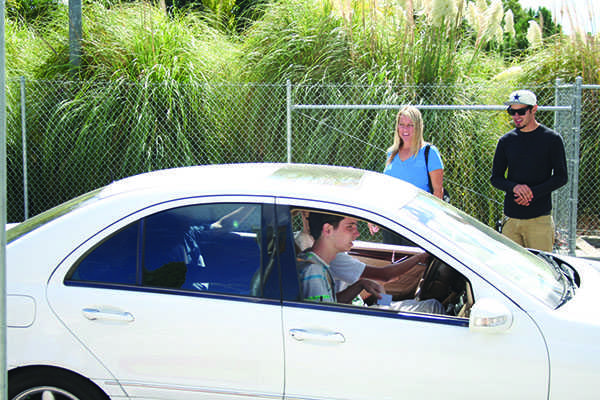by Christina Calderon, staff writer
With summer right around the corner, warm weather is coming in and people are heading out – to the mountains, that is.
Rock climbing has been gaining popularity as a summer sport.
Although this extreme sport is both physically and mentally demanding, it has managed to attract people from all over the world.
In fact, a few Cal High students have taken a liking to the sport.
Senior Peter Heath is an avid top-rope, lead, and free climber who often heads to the mountains with his father, Larry Heath.
Peter Heath got his start at a Boy Scout camp and has been rock climbing ever since.
“(The hardest part was) learning to trust my body and what it could handle,” said Peter Heath. “You have to trust your feet and your hands.”
In this activity, climbers must scale rock formations safely using strength, technique and proper equipment, such as a helmet, ropes, a harness, and the right pair of shoes.
The term “rock climbing’”is very broad, as there are different techniques and styles. These styles range from relatively basic to more challenging and dangerous.
The most basic and safest of these is top-roping, where the participant is attached to a rope and climbs until he reaches a pre-set anchor at the top of the course.
One of the more challenging and risky styles is free-soloing, where the climber relies solely on his strength and skills to help scale the rock without the use of equipment.
This broad spectrum of styles makes it easy for anyone to find their niche.
Sophomore Blake Brown is also a fellow climber . He began his climbing journey in Colorado four years ago. He does lead climbing and climbs alongside his brother, senior Brandon Brown.
“When I climb I think about how much fun I’m having,” said Blake Brown. “You feel free and you don’t really worry about anything.”
Like in many sports, the athletes are always challenging themselves to attain new goals. Brandon Brown is no exception.
“You’ve got to keep moving forward,” said Brandon Brown. “You can’t stop.”
According to Peter Heath, not only does rock climbing require trusting one’s body, but the climber must also persevere, be in good physical condition, and be aware of safety.
“You also need to be a meticulous person when it comes to your safety,” said Larry Heath. “You always check your safety systems.”
Neglecting to notice potential hazards or climbing without using gear, like in free climbing, can result in injury or death.
Blake Brown knows of a free climber who made it halfway up the mountain before falling off, but is unsure of the extent of the climber’s injuries.
Brandon Brown has also witnessed someone whose belayer released the rope in a gym, leaving the climber to fall on the mats. Luckily, the climber was not seriously injured.
Not all injuries are serious, and most can easily be avoided.
Rock climbers will commonly leave the course with scrapes, cuts, bruises, and other little injuries.
“There are inherent dangers to climbing, but if you are careful and consistent in what you do, those dangers can be mitigated,” said Larry Heath.
Dangers and challenges pose daunting obstacles for rock climbers.
Despite that, many climbers have found their passion in being one with nature.
“When you get to the top, there’s nothing like it and you get a great sense of accomplishment,” said Peter Heath. “And it’s a great view from the top.”








